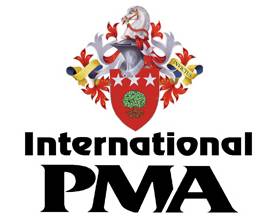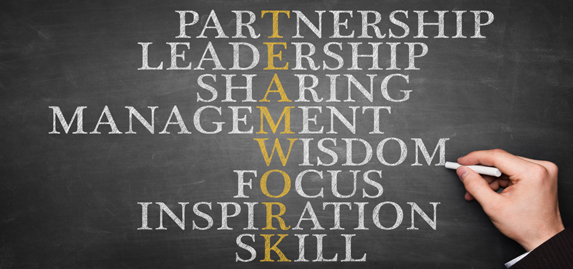Practical Spreadsheets
Course Aims
- To develop skills in using spreadsheets for business calculations, planning and financial modelling.
- To design appropriate financial and business models using spreadsheets to user specifications and requirements
Learning Outcomes
- Use the functionality of the spreadsheet (Microsoft Excel is recommended)
- Understand and apply the built in functions of the spreadsheet package
- Use the spreadsheet as a database.
- Integrate the spreadsheet and its data with other office productivity software (Microsoft Office is recommended)
Course Syllabus
- Open spreadsheet software, opening and/or create new workbooks, name worksheets in workbooks, using mouse and keyboard shortcuts, navigating around worksheets, managing worksheets, create and apply templates in worksheets, changing colours in worksheets and worksheet text and data items, display or hide toolbars, increase or decrease worksheet display size, freezing titles.
- Entering data in worksheet cells, formatting data cells, entering data series, changing options for entering and editing data, copying data across cells, clear and delete cells, entering formulas, entering absolute and relative cell references, select specified cells in worksheets, highlight values meeting specified conditions, deleting worksheets, add or delete rows and columns, moving cells and data.
- Formatting worksheets for printing, using borders, shading and background patterns, formatting numbers, decimal points, dates, times, highlight values that meet specified conditions, formatting pivot tables, creating styles, merge cells, split cells, display text with a cell, changing headers and footers.
- Creating charts, adding and changing text and data in charts, changing placement of charts, formatting legends and details in charts, changing scales of charts, presenting alternative charts for data including pie charts, bar charts.
Recommended Text
Book Title -: Excel 2002 for Dummies (For Dummies)
Author -: Greg Harvey
Publisher -: Hungry Minds Inc
Additional Reading
Book Title -: Microsoft Excel 2000 Step by Step
Author -: Catapult
Publisher -: Microsoft Press International
Practical Database
Course Aims
- To acquire skills in the use of a database application package for storing and retrieving data as part of a management information system.
- To design a database and management information system to meet the requirements and specifications of the user or the organization.
At the end of the course the student will have the ability to:
- Understand and apply the concept of flat files and relational databases.
- Use a selected database package (Microsoft Access is recommended) to create a database, tables and their relationships.
- Design appropriate input forms to populate the databases.
- Use and apply the reporting functionality of the database application package.
Course Syllabus
- Theoretical understanding of data, fields and attributes, data relationships, one to one, one to many, many to many, flat files, relational database, how do databases work, understanding tables, queries, forms, reports.
- Key issues in designing a database, identifying fields, key fields, relationships between tables, creating a database using appropriate database package, adding and removing fields, field attributes, identifying and setting primary keys and indexes, defining relationships and setting referential integrity.
- Working with data, adding and editing data, selecting, copying and moving data, sorting data, finding data using filters, using expressions in filters, finding and deleting duplicate records,
- Working with queries, creating and modifying simple queries, using multiple tables in queries, joining multiple tables in a query, using criteria and expressions to retrieve data.
- Using forms, designing forms, creating and modifying forms, setting form properties.
- Reporting, working with reports, designing reports, creating mailing lists and mailing labels, sorting and grouping records within a report, calculating totals and using expressions.
Recommended Text
Book Title -: Access 2002 for Windows for Dummies (For Dummies)
Author -: John Kaufeld, Kenny Kaufeld
Publisher -: Hungry Minds Inc
ISBN No -: 0-13-196858-0
Additional Reading
Book Title -: Microsoft Access 2000 Step by Step
Author -: Catapult
Practical Word Processing
Course Aims
- To use a Word Processing Application to produce a variety of documentation to required specifications
- To enable the user to use other functions available in the word processing application to improve office productivity
Learning Outcomes
At the end of the course the student will have the ability to:
- Use Word Processing application packages and its functionality (we recommend Microsoft Word)
- Produce business documentation using a variety of layouts and text enhancements features
- Produce business forms using columns, lines and boxes and tables
- Utilise headers and footers and styles in the presentation of text
- Work with longer documents
- Use mailmerge and other facilities to automate document production
- Produce macros to automate commonly used procedures
Course Syllabus
- The Word Processing Application Package
- Opening documents, and saving
- Formatting bold, italics, fonts, font sizes
- Tabs
- Margins
- Page Orientation
- Headers & Footers
- Columns,
- Tables
- Business Documentation
- Documentation Format
- Letters, Memos & Reports
- Creating Forms
- Standard Rules & Boxes
- Layout Techniques
- Table Manipulation
- Borders & Shading
- Merging Documents
- Standard Letters
- Standard Paragraphs
- Record Creation
- Field Deliminators
- Merging Data
- Editing Data Source
- Envelopes & Labels
- Working with Long Documents
- Using Styles
- Table of Contents
- Creating an Index
- Block Manipulation
- Macros
- Recording a Macro
- Assigning to the Toolbar and Keyboard
- Running a Macro
- Using a Macro in other documents
- General
- Pagination
- Inserting Date
- Bullets & Numbering
- Widow & Orphan Protection
- Dictionary & Thesaurus
- Keyboard Shortcuts
Recommended Text
Book Title -: Word 2000 for Windows for Dummies (For Dummies)
Author -: Paul Holden, Brendan Munnelly ECDL
Additional Reading
Book Title -: Advanced Word Processing: For Microsoft Office 2000
Introduction to Information Technology
Course Aims
- To provide the student with the foundation knowledge and understanding of information technology and its application in the real world
- To provide the required understanding of hardware and software components for the development of computer systems
- To provide the necessary skills to design and configure computer systems for office and commercial applications
- To understand the workings of networking, intranets and the Internet and their impact on operations
Learning Outcomes
At the end of the course the student will have the ability to:
- Understand the basic hardware components of a computer system
- Define the differences between micro, mini and mainframe computers
- Understand the technical aspects of computers systems with reference to speed, capacity and functions
- Understand the characteristics of software and the criteria for selection of software for defined purposes
- Design systems and computer configuration and security issues
- Apply Networking principles to computer configurations and systems
Course Syllabus
- Introduction to Computers
- Introduction to Information Technology
- Information Technology an its application in a variety of real world situations
- Comparing and contrasting Micro, Min and Mainframe Computers
- Data representation and transmission including number bases
- Computer Logic
- Hardware components
- CPU processors and types
- Main and Backing Storage
- Input Devices
- Output Devices
- Types of Data Processing – Real Time, Batch Processing
- Software
- Operating Systems
- Application Programmes
- Software Development, types of development packages and Languages
- Software Selection criteria
- Basic Networking including topologies
- The workings of the Internet
- Data Security and control
Recommended Text
Book Title -: Principles of Information Systems (8e)
Author -: Stair & Reynolds
Publisher -: Thomson Course Technology
ISBN No -: 1-4239-0119-3
Practical Desktop Publishing & Presentation
Course Aims
- To acquire skills in using appropriate Desk Top Publishing software to produce textual and graphical publications to designed requirements and specifications
- To acquire skills in using appropriate Presentation application software to produce presentation materials to designed requirements and specifications
Learning Outcomes
At the end of the course the student will have the ability to:
- Produce well designed publications, brochures, folders and other publicity materials to meet the objectives of the publication
- Produce the publication for printing with outside commercial specialist printers
- Produce Presentation materials to meet the objectives of the presentation
Course Syllabus
- Desktop Publishing Software and its functionality. (We recommend the use of either Adobe Pagemaker or Microsoft Publisher)
- Understanding design principles and terms used in the printing industry
- Defining client requirements, documentation of client requirements
- Page setup including margins, columns, setting master pages, rules and printer options, setting grids, snapping to grid and rules, odd and even pages, colour selection
- Importing and placing text, images to client specifications including appropriate point sizes, headings, fonts and typefaces, leading,alignments, ascenders and descenders, hyphenation rules, font specifications, line spacing, alignments, base lines, image cropping to designed sizes, borders and shading, boxes, rules, page numbering
- Setting typeface styles, creating and amending paragraph styles
- Setting equal columns, widows and orphans, drop capitals, bulleting lists
- Creating indexes, table of contents, age numbering
- Printing to selected printers, setting printer marks, printing to file, preparation of file for printing by bureau
Presentation
- Presentation software and its functionality (we recommend the use of Microsoft Powerpoint software)
- Understanding design principles as relevant to presentation
- Understand presentation software, defining client requirements, create templates, use pre-designed templates
- Select fonts and typefaces, select and apply colour scheme to requirements, bullets and numbering, page numbering, add notes to slides
- Apply transition effects for on screen slide presentations, define and test time periods between slide presentation
- Printing slides, notes and handouts as appropriate and to client requirements
Recommended Text
Book Title -: Mastering Desktop Publishing
Author -: Simon Mitchell
Publisher -: (Macmillan Master Series)
Additional Reading
Book Title -: PageMaker 7: the Complete Reference (Complete Reference)
Author -: Carolyn M. Connally
Publisher -: Osborne McGraw-Hill
Book Title -: Microsoft PowerPoint Version 2002 Step by Step
Author -: Microsoft Press International
Introduction to Programming
Course Aims
- To provide the student with the necessary foundation for understanding the process of programming
- To enable the student to explore the different characteristics of programming languages
- To enable the student to commence programming using Microsoft Visual Basic
Learning Outcomes
At the end of the course the student will have the ability to:
- Understand the process of programming and the conditions for successful and error free programme development
- Critically compare and contrast different languages currently available for different environments.
- Determine the most appropriate language to use for software development to meet the requirements, objectives and operating demands of the user
Course Syllabus
- Defining minimum computer configurations for programme development
- Introduction to programme execution within a computer
- Fundamentals of good programming practice – design and choice of language
- Programming languages, their characteristics, strengths and limitations including Pascal, C Programming Language, C++, Hypertext and
- Scripting Languages, Visual Programming Languages Language selection
- Introduction to Visual Basic development environment
- Input and Output of Visual Basic
- Controlling Events
- The Interface Controls
- Input Boxes
- Data Processing with Visual Basic Data
- Expressions and Math Operators
- Comparison Operators
- Working with Data
- Making Decisions
- Using Else
- If…Else Statements
- Selecting with Select Case
- Looping in Visual Basic
- Using Shapes
- Line Control
- Shape Control
- Programme Distribution
Programming Algorithms
- Counters and Accumulators
- Swapping Values
- Sorting. Nested Loops
- Searching Arrays
- Introduction to Data Structures
Other Programming Languages
- Programming with C.
Introducing C. Analyzing a C Program. Using the main()Functions Format. Using the #include Statement. C Data. C Comments. Declaring Variables. C Functions. C Operators. C Control Statements. - Programming with C++Learning C++. Object Terminology. Fundamental Differences Between C and C++. Introducing Objects. Benefits of OOP.
- Macro, Batch, and Scripting LanguagesVisual Basic for Applications (VBA). Scripting in Windows
Internet Programming
- HTML Programming
- ActiveX Controls
- ASP and .NET Technologies
- Introduction to XML
- Java Programming
- JavaScript
Recommended Text
Book Title -: Beginner’s Guide to Programming 3/E Que
Author -: Greg Perry Absolute
ISBN No -: 0-7897-2905-9


